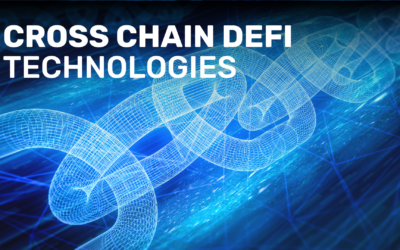At the moment, almost every individual is familiar with digital financial transactions or to be précised, cryptocurrency. Hearing about cryptocurrency, the first thing that comes to a person’s mind is Bitcoin, or maybe Elon Musk. But only a few know the answers to the questions like, what makes these transactions so secure? Or how these transactions are validated?
The answer to the first question is because of blockchain technology. It is a distributed ledger with no trusted central authority. It functions as a decentralized database and all the transactions occur through a peer-to-peer network.
Now the answer to the second question comes. Each member of the blockchain participates in the validation of the transactions. In other words, the blockchain works based on a common agreement (consensus algorithm) of the members.
The second answer, however, leads us to the different types of “consensus mechanisms”. PoW and PoS are two of the most popular and used mechanisms among the others. This insight is for a better understanding of the two and the debate of PoW vs PoS.
What is PoW?
PoW stands for Proof of Work. It is referred to as the blockchain’s ’original’ consensus mechanism. Though it was created in 1993, Satoshi Nakamoto used this mechanism for Bitcoin to verify transactions without the presence of a third party. In this mechanism, the miner has to solve a cryptographic puzzle to validate a transaction and in return, the miner gets a reward. The miners compete against each other to get the correct answer, known as a hash.
It slows down the creation of new blocks making the blockchain harder to tamper with. For example, a miner can only create a Bitcoin block every 10 minutes.
Solving a cryptographic puzzle requires immense computing powers, thus demanding a large amount of energy. A miner with better equipment and easier accessibility to electricity is the one with a higher probability of solving the puzzle as compared to the one who is unable to afford the luxuries. Thus, this mechanism favors the rich. Not only it requires a significant amount of energy but the number of transactions possible at a given time is also limited.
Another limitation of PoW is that many miners come together in a group called ‘mining pool’ to increase their chances of mining and distribute the reward among themselves. This makes the blockchain more centralized; contradicting the fact that blockchain needs to be a decentralized ledger.
Also if a miner has a hold of 51% of the computing power, he can easily tamper with the blockchain and add a malicious block.
Considering all the cons of PoW, other mechanisms were created. PoS or Proof of Stake is one of the most popular alternatives.
What is PoS?
PoS stands for Proof of Stake. It was created in 2012 by Scott Nadal and Sunny King, as an alternative mechanism for PoW. Peercoin was the first-ever blockchain project to use Proof of Stake. This mechanism involves a selection process. In PoW, each miner uses to verify the transactions, whereas, in PoS there is a random selection of a validator to validate the next block. The selection is not so random. This makes it more decentralized as there aren’t any mining pools, as discussed in the case of PoW.
The selection depends on how many coins a person holds. The validator has to give up some coins in the form of a stake, or you can say, as a security deposit. The more the stake, the more are the chances to get selected. The selected validator checks if all the transactions in the block are valid or not. If they are, then the block is added to the blockchain.
The mechanism does not completely rely on the stake size for the selection. If done so, then this method is biased towards the rich forgers. To compensate for this, other methods like “Randomized block selection” and “Coin Age Based Selection” have been created. Randomized block selection uses the combination of the lowest hash value and the size of the stake, while on the other hand Coin Age Based Selection, the chances of being selected depend on the coinage. Coinage is calculated by multiplying the number of days coins are held as stake by the number of coins that are being staked. This means that users that have staked older and larger sets have higher chances of getting selected.
In PoS instead of a reward, the validator receives a transaction fee. If the validator approves a fraud transaction, he loses a part of the stake as well as the right to validate in the future. To carry out a 51% attack, the validator needs to own 51% of the cryptocurrency, which is practically impossible.
Since Proof of Stake doesn’t allow everyone to validate, the amount of energy consumed is considerably less than Proof of Work. Also, one does not need to have expensive equipment to increase the chances of mining. So setting up a node in PoS is a lot less expensive and less energy-consuming as compared to PoW.
Some of the cryptocurrencies that use Proof of stake consensus are EOS(EOS), Tezos(XTZ), Cardano(ADA), Cosmos( ATOM), Lisk(LSK).
PoS vs PoW:
| Proof of Stake | Proof of Work |
| Participating nodes are known as validators. | Participating nodes are known as miners. |
| Does not let every individual mine. Works on the basis of the selection process. | Every miner competes against each other to find out the solution. |
| It is more decentralized. | Due to the presence of mining pools, it tends to be more centralized. |
| It requires less electrical energy and no expensive equipment. | Requires expensive equipment and high computational power, thus more electrical energy consumed. |
| More prone to 51% attack. | Chances of 51% attack are nearly impossible. |
| Validators receive transaction fees. | Miners receive block rewards. |

Other consensus algorithms in Blockchain:
Other than Proof of Work and Proof of Stake, there are several more consensus mechanisms applicable in blockchain projects.
- Delegated Proof of Stake (DPoS)
- Byzantine Fault Tolerance (BFT)
- Practical Byzantine Fault Tolerance (PBFT)
- SIEVE
- Proof of Weight (PoW)
- Unique Node Lists (UNL)
- Proof of Burn (PoB)
- Proof of Activity (PoW)
- Proof of Capacity (PoC)
About Me:
Hi, I am Avantika Gupta. I got introduced to the crypto world a few weeks back and became a part of the Cryptosparta family. I am a fanatic of the advertising world and I love to get insights on what effect does marketing have on the success of cryptocurrency.











